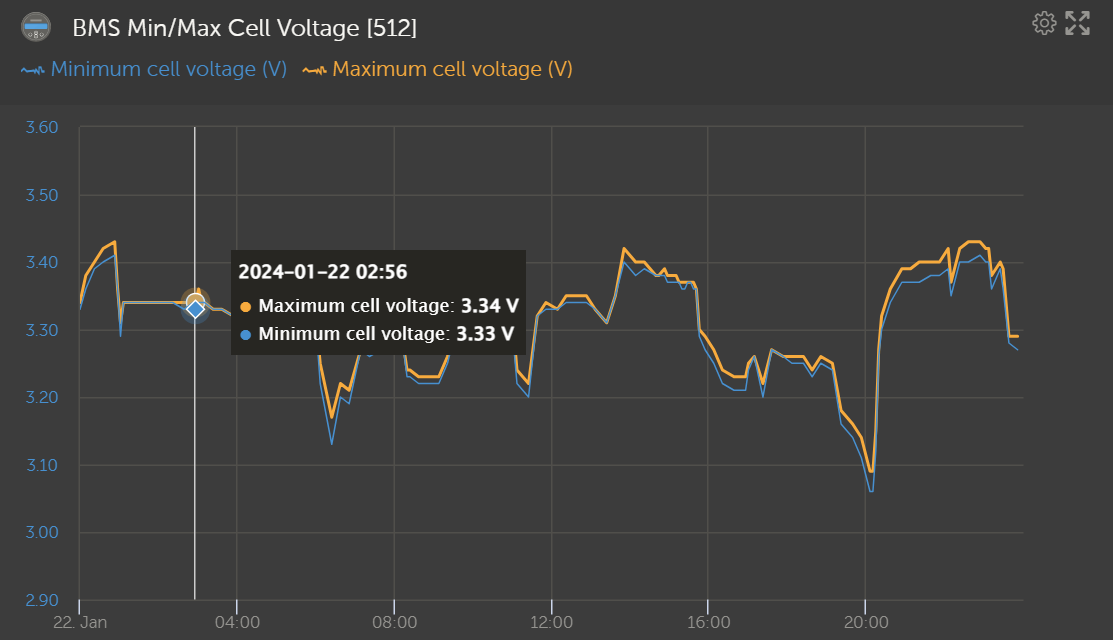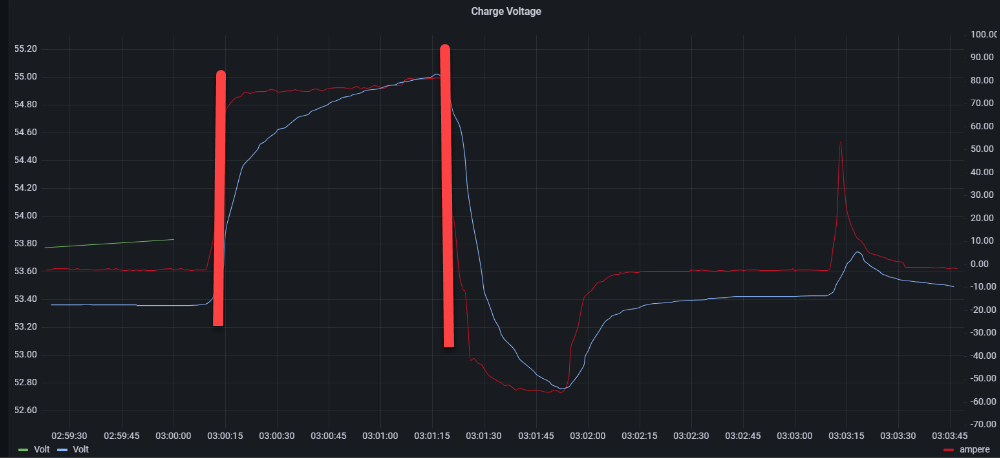I am running a 3 phase Multiplus 2 setup without MPPTs. I have a 16 cell Eve 280 ah battery attached to the system. PV inverters are connected to both AC in and AC out. The setup is controlled by the BMS which sets the CCL=190A and CVL=55.2. The new JK bms has also option to set a float voltage (53.6V) after an absorption time of 1 h in my case. The absorption time starts as soon as one cell hits the SOC = 100% limit of (3.45 V).
What i am experiencing is that my SOC 100% limit e.g. one cell has reached 3.45 V is triggered at low SOC. In the example below around 60%. I therefore tried to limit in ESS some parameters. I have set charge current limit to 80A and voltage limit in fact to (55.1 V). This did not really solve the problem.
After monitoring the parameters i found a change in VE bus state to absorption at the point of time when the SOC was jumping

if you zoom into the time spot it looks like this: Starting at 03:01 it goes into absorption until it hits the 100% trigger voltage on cell level. After that charging stops.

In order to understand my charging curve better i have been charging the battery from very low SOC with 80A to see if this is somehow due to a charge current of 80A and the battery not being able to cope with it. Beside some test which i did in between this is very smooth voltage increase from low to full. E.g. I could not reproduce the SOC jump in that case.

I try to get a better understanding whether I have correctly configured the system. What i am wondering is why the VE Bus State is changing to absorption and if this could be the root case for the steep voltage change and the 100% SOC jump. Should in the case of a BMS controlled system the Ve.Bus State change at all?
Can anyone help with this question?

 I think balancing at that specific point of time was pretty ok from what i would be able to judge out of statistics. I still dont understand why the charging volt would go from 3.33Vish to 3.45 V in a minute given the charge current is 80A. You can see that in the details chart from 3:00:15 to 3:01:15 e.g. in one minute it increases from 54V to 55.1 V on a constant 80A. That is why I am suspecting something else to happen:
I think balancing at that specific point of time was pretty ok from what i would be able to judge out of statistics. I still dont understand why the charging volt would go from 3.33Vish to 3.45 V in a minute given the charge current is 80A. You can see that in the details chart from 3:00:15 to 3:01:15 e.g. in one minute it increases from 54V to 55.1 V on a constant 80A. That is why I am suspecting something else to happen:
